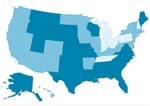government
Link seen between chronic conditions and Medicare spending
NEWS IN BRIEF — Posted July 1, 2013
New research has quantified the effect of chronic illnesses on Medicare finances by showing significant spending increases for patients with conditions such as stroke, cancer and kidney disease.
About 40% of patients with physician and other outpatient coverage under Medicare had two or more chronic conditions in 2008 and 2010, a June article in Medicare & Medicaid Research Review reported. These beneficiaries accounted for 70% of total Part B payments in both years. The analysis shows that overall spending rose more than 10% from 2008 to 2010 as average costs also increased.
“The rest of the increase in total Medicare Part B payments is due to the increase in enrollment,” the authors wrote. “Interestingly, the increase in average Part B payments between 2008 and 2010 is consistently high — in the 8.3% to 9.8% range — even for those without any chronic conditions.”
The authors stated that their research adds to other work showing a strong link between costs and patients with multiple chronic diseases. For example, the number of Part B enrollees with three chronic conditions increased between 2008 and 2010 by about 45,000 patients, or 1.7%, to 2.7 million beneficiaries. Average Part B payments for those patients was $6,655 in 2010. Beneficiaries with six chronic conditions totaled more than 275,000, and the cost per patient was $14,730 in 2010.
The lead author of the article is Erkan Erdem, PhD, a senior research associate with the firm IMPAQ International in Washington. The article is available at a Centers for Medicare & Medicaid Services website (link).












